My Story: Background and Journey
Since I was a child, I remember analyzing people’s reactions to their surroundings and the reactions to others around them. This process of analysis was purposeful.
People watching.
How different people reacted to similar stimuli was fascinating. Soon, I would place bets in my head about what someone would do or how they would react. It was a fun game that I played.
Computers would soon be added to my own made-up game. In elementary school, our class learns to use computers on large floppy disks and an Apple IIe. If you got to use a computer with black and white instead of different hues of green, you were one of the lucky ones.
But I didn’t just play the games. I would be taken mental notes on how the software would react to different inputs. The game Lemonade Stand was my jam. It was sure to rain if there was a 30% or 60% chance of rain.
Unsurprisingly, I would grow an obsession with analyzing websites and what buttons to push that will optimize them for search engines and conversions. It’s my jam.
But, here’s the problem that I see. Where is that balance between SEO and CRO? These two don’t always “agree.” How can we fully optimize both, and what workarounds exist to achieve the same end result?
The divide between CRO and SEO “best practices” can feel like playing tug-o-war in Squid Games. Bridging this gap between SEO and CRO is what I have chosen to dedicate myself to.
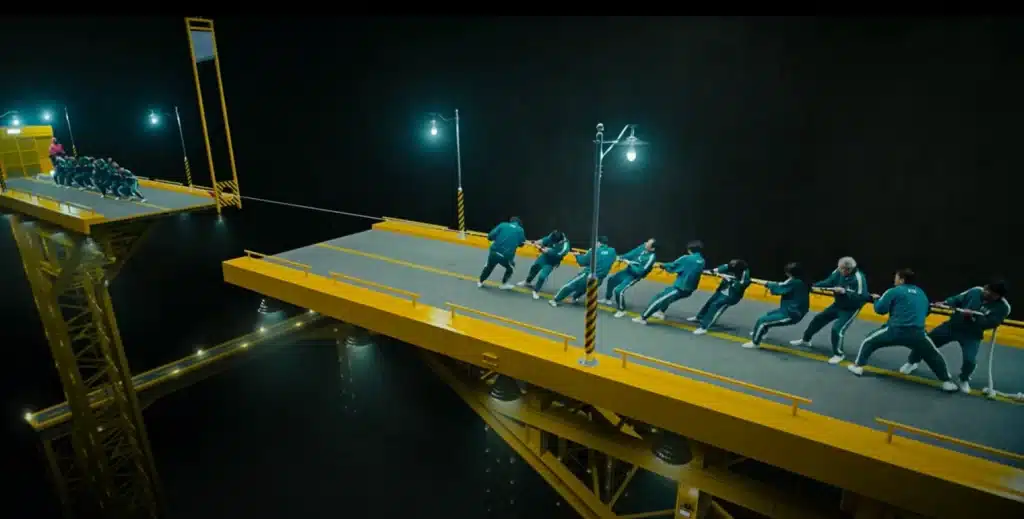
And yes, it is an obsession.
This is what I nerd out on. It is what I study, one of my hobbies, and my job.
Let’s Start At The Beginning
In the mid-90s, I was, what some would call, a troubled teen. Let me just say that I was grounded for an entire summer without going too far into the details.
Zero stars. Would not recommend.
One fateful day, I was on the family computer. You know. The one in the living room connected to a dial-up box that would disconnect when someone called you? Yea, that one.
Well, I was on Yahoo!, right-clicked, and saw an option that read “view source.” Out of curiosity, I clicked the option. Behold! The code that made up Yahoo!’s website. I thought that I was some sort of super hacker. I analyzed the HTML and connected the dots between the visual image and where the markup was starting the image tag.
It was like entering into a new world. I was hooked.
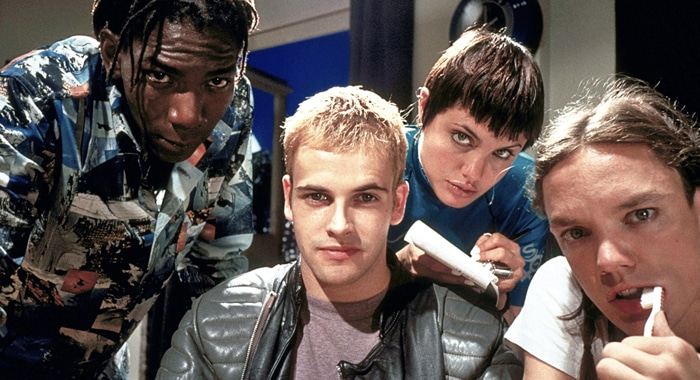
A week or two later, I picked up the book “Instant HTML” and started teaching myself how to build websites.
My obsession with the web led me to learn Dynamic HTML (DHTML). This is somewhat was the cool kids call CSS and JavaScript today.
Natural progression pushed me to demand more from the websites that I created. I wanted interactivity and the ability for the site to recall prior user inputs. So, I dabbled into the server-side of websites. After a short run with BASIC, I learned enough Pearl to get some basic form processing working.
And, somewhere along this road, I was paid to launch my first professional website… by my step-dad. I had made it. I was now a pro! Woot!!
That first paid website gig, which still stands today, became a much larger step into the future than I would realize at the time. Once it was released on the web, something miraculous started to happen. People found the site, and better yet, they interacted with the features. Success!
But how did they find the site? We knew nothing about marketing, yet traffic kept coming.
I checked the server’s log files and saw traffic coming from various search engines.
And that was the end of that. I jumped into SEO and started learning how all of these different search engines considered a site or page relevant.
Now, don’t think that I stopped building websites or programming. Nope. SEO was just another tool in the chest to use during the development process.
This was about 25 years ago. I’ve since created countless websites and added PHP to my repertoire of knowledge.
I’m not formally trained. I carry no degrees on the topic. Every markup language or programming language I learned was self-taught. Often, this meant reading through many online articles and just figuring out what works. I don’t say this to brag but to simply frame the early days of programming. There was a lot of banging my head against a wall and frustration along the way.
I was the only one in my circle of friends who programmed. I didn’t attend conferences and, aside from a handful of discussions online, when it came to programming or online marketing, I pretty much kept to myself for the first twenty years of this career. Hell, when I spoke to people, I often used incorrect terminology or mispronounced acronyms because I rarely spoke to anyone about the topic.
I was all about reading and typing – and I was not the greatest at either.
I would advise anyone interested in the topic NOT to do what I did. Since I started connecting and communicating with others, my learning has taken extraordinary leaps.
Since I was self-isolated, I never realized that SEOs rarely knew how to program sites or that programmers, by and large, did not have an understanding of search engine optimization.
Hell, I even built my own search engine. Well, two search engines. One organic, and one was a pay-per-click engine.
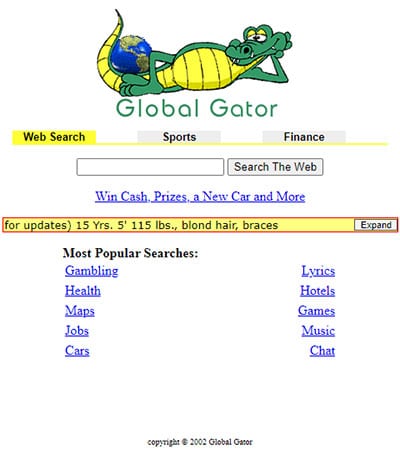
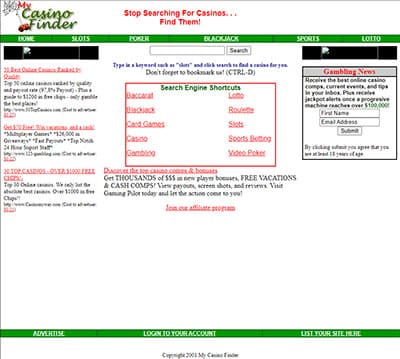
As time progressed, I found myself leaning more and more into SEO, which has seen dramatic changes since the late 90s, when I first realized that Alta Vista and MSN were treasure troves of traffic.
Early SEO
Hot Bot for tech sites.
Alta Vista and MSN for general information.
Lycos fit in there somewhere.
If you have a question, Ask Jeeves.
Yahoo! and Dmoz were the undeniable behemoths every other search engine dreamed of becoming.
That was the search landscape of the mid and early 90s. This was right around where I entered the game. My first trip down SEO lane was around early 1997, a few months before Larry Page and Sergey Brin purchased the Google.com domain name.
It was the wild west of the Internet.
I never sought to gain high placements on that first website. I more or less fell into SEO. It was an absolute fluke that the site I created received the traffic and engagement it did. Although, admittedly, there wasn’t much competition.
The obsession came swiftly. I was in love with the idea of manipulating a system to show my sites where I wanted. Looking back, I think there is a bit of that “I’m a hacker!” excitement that initially pulled me into creating websites.
Soon, like most SEOs at the time, I was buying up link submission software, creating doorway pages, and keyword stuffing with white text on a white background. Yea, I was very much into blackhat tactics. Most of the practices that will get you banned from Google were generally accepted.
Introducing Google
Google changed that, and I’m glad that they did. I can’t imagine the Internet innovating at the level it does if Google didn’t introduce Page Rank. For that matter, think of the social impacts, both good and bad.
But I digress.
After jumping the murky waters of blackhat SEO, I quickly tired of it. I can appreciate the out-of-the-box thinking that many blackhats had. It just wasn’t a place for me. So, I took a step back into the cleaner whitehat tactics.
This meant creating content, optimizing meta tags, and making sure that search engines could read a site. One problem I faced was that I’m not much of a writer. I always earned low marks in school for writing. Plus, I am a slow reader.
So, not the best combination. But I persisted. Over time, I think my writing has improved.
Well, as time passed and Google’s stronghold was solidified, I continued to learn, build, and optimize.
Hard Times
In the early-2000s, I was building, ranking, and flipping online casinos. Not a bad gig. But the laws around online gaming were changing.

I recently broke up with my fiance, had little money, and was sharing a single-bedroom apartment with my father, who had recently lost a business he had for my entire life. On more than one occasion, I remember searching under couch cushions and in random locations for coins so that we could buy food or pay rent.
It was one of the financial low period of my life.
Trying to “make it” via the Internet was wearing, to say the least. I was burning out.
My roommate/dad picked up some sales jobs here and there. I delivered pizzas, took a couple of classes in school, and worked a graveyard security job.
Of course, I couldn’t keep away from websites and marketing. I started reselling car accessories on eBay. At the time, automatic spell correction and search suggestions weren’t a thing. So, I leveraged my SEO knowledge and cut out my little piece of the market by exploiting commonly misspelled words by purposefully including those in my listings’ titles.
I decided that I needed a break from the monotony. I needed some excitement, but I still had a passion for “hackery.” I don’t remember exactly how it came to mind, but I decided that bounty hunting was something I wanted to transition into. I mean, I was pretty good at finding information on anything and anyone.
So, that’s what I did. I became a bounty hunter and bail bondsman. Most of our work was in South Central and East Los Angeles.
Little did I know that becoming a bail agent would bring me right back into programming in a way that would change my course.
Industry Monster
Luck would have it that my employer, Armen, at the bail bond agency also had a stake in an alcohol importation company.
Armen and I hit it off right away and became good friends.
Over time he learned that I knew a thing or two about websites and marketing.
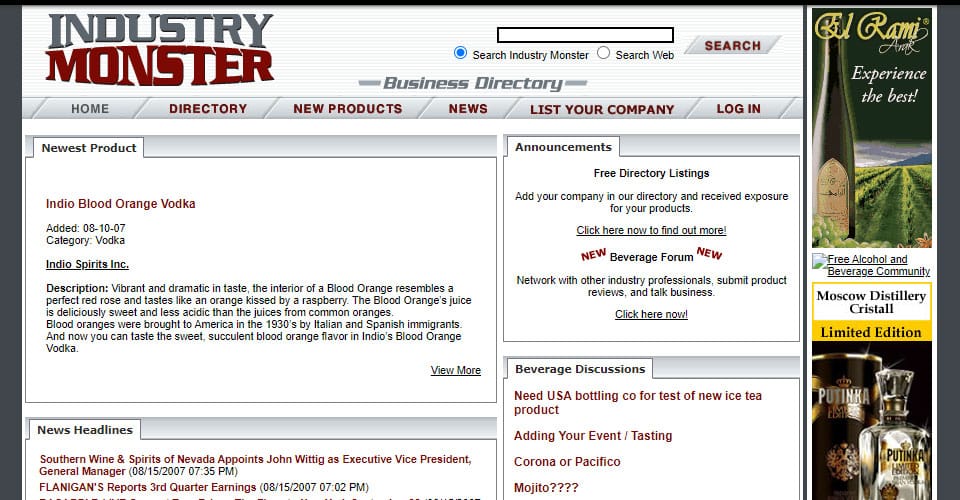
Eventually, this led to meeting his partners in the alcohol importation company. They discussed plans for an industry-specific directory site, Industry Monster.
“I’m in!”
And with that, we started planning and developing.
At about 70% into the project, we realized that the design and development team did not know how to program the backend functions to a level that was up to par with our expectations. The site, built on a LAMP stack, was unfamiliar territory for me. See, up until this point, almost everything I did was front-end except for PERL or editing snippets from a variety of languages. But, the project was at a standstill – lost in the land of endless revisions.
So, I did want any quasi-sane person with some knowledge of other programming languages would do. I learned PHP. I would work through the night at the bail bond office. When not springing someone from the joint, I’d be pounding away at the keyboard, teaching myself this new language.
Side note: It turns out WordPress is written in PHP too. LOL. So yea… that was a helpful coincidence.
We launched and would soon learn a vital lesson – a lesson that would later be covered in books, such as “The Cold Start Problem.” That lesson is, building a community must be accomplished on an atomic level and scaled.
In hindsight, we had three things working against us:
- Lack of billions in investments to shove our way into relevancy. An oddly common practice. Also, I believe this to be a horrible excuse. There are plenty of great companies that start from nothing.
- Lack of industry motivation. We were early to market with an industry that did not yet realize the value of a website, online marketing, or the Internet. Low motivation = low CVR. Low motivation in the target industry can be painful when your product relies on mass acceptance.
- Lack of community. I’m not saying there was no community within the alcohol industry. There is. We did not start small and target a micro audience where we could learn, adjust, and grow. We were like the awkward kid at the fancy backyard soiree that cannonballs into the pool.
To nobody’s surprise but our own, the site didn’t last very long and never gained the traction we hoped. The lesson:
- Have big dreams but create micro steps to get that. Get granular.
- Test. Make sure your product or service fills a want.
- Motivation is everything. Just because we care and we want others to care doesn’t mean that others care.
Overdrawn. Overworked. Underpaid.
Working in bail was a great experience. It taught me a TON.
Working on the Industry Monster project was also a great experience. The lessons I learned and having the reason to learn programming on a LAMP stack was life-changing.
But I was broke. And, well, you see… there was this girl I was dating.
We had been together for a bit. She worked as a bank teller and would now and again comment about how people overdraw their account by a few dollars. They would do this several times. “Why not just pull out your daily max at one and only pay one fee?” she would say.
One day, had a plan to take her out. I can’t remember if it was for her birthday or an anniversary. I wanted it to be a special time. A memorable time. The only problem was that the bail bond game didn’t earn me much. Like less than minimum wage for the hours I worked. I had probably less than $20 in my account.
Well, her advice of going big on the overdraw entered my head. So, I went to the bank and withdrew the max, $300. I did this three days in a row. I still don’t know how a bank used to let people do that. But that’s another discussion for another time.
Going that far into the rears was gut-wrenching. Love will make you do weird things.
She never knew that I went negative by $900 and added charges to my credit card; to this day, I don’t think she knows.
I have no idea how I came back to a positive account balance. I simply don’t remember. What I do remember is the trip we took. That trip was one of the most memorable times in my life. No regrets.
By the way, it’s been about eighteen years since that trip. We’ve been married for nine years now.
But, I’m getting ahead of myself.
I was uber broke, and not much was going for me. I remember pulling my credit score. It was a whopping 420. Ouch.
My dad was in a similar position. He ended up getting a sales job at a wholesale infant wear company. There were a couple of problems:
- The company had few incoming leads
- He didn’t know much about infant clothes or how to sell them
Our survival was a team effort. This was an “us” problem, and I wanted to do what I could to help.
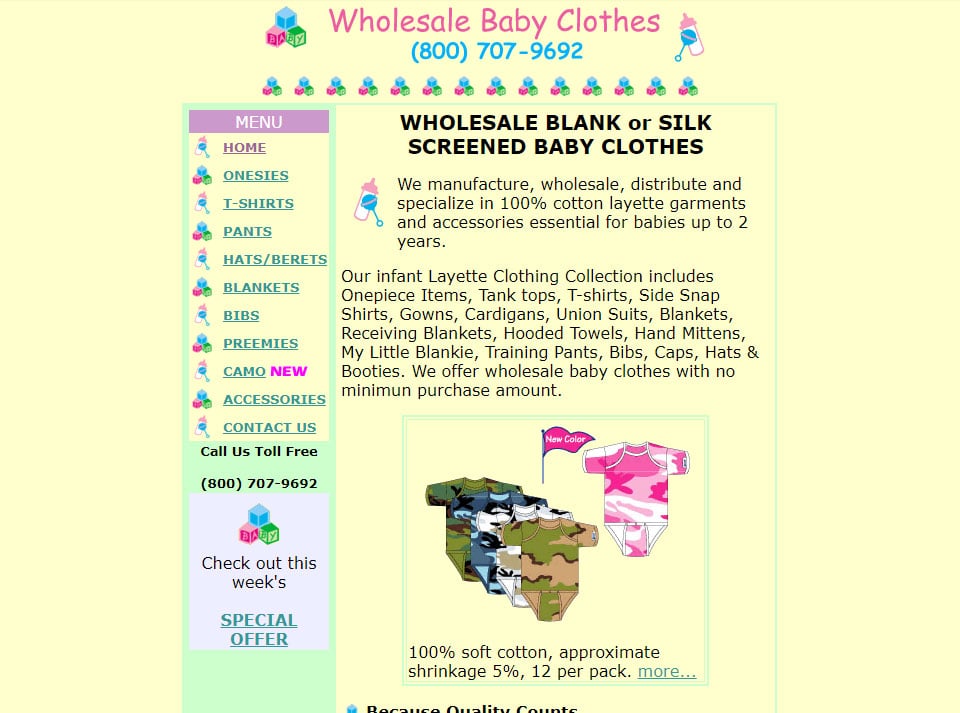
Baby Clothes: The Breakout Company
I read an article the other day that surmised success is about persevering through failures. The ideal is that most people will be met with several failures before learning enough to succeed. Well, I guess I had enough failures, and it was my time to have some success.
The success would come from baby clothes. Yes, I know, weird.
My dad was struggling with getting leads for the new sales position he took. Although I couldn’t do much, he asked if I could build him a website and get leads. So, I went to work. I think that site took me a couple of weeks to build.
The site had no marketing budget because we had no money. Getting leads was a necessity for him to keep his employment. So, organic was the only way to go.
When building the site, I did what many SEOs do today. I compared what the top-ranked sites were doing, replicated, and tried to make our site even better.
It worked.
He was getting a few leads every day after the first month of the site becoming live.
Since the business he worked for just brokered the goods of other manufacturers, and we had their contact information, and we were doing our own lead gen, why shouldn’t we just start reselling the clothes ourselves?
That was the birth of Wholesale-Baby-Clothes, later renamed Wholesale Blank Clothes. Yea, I know, not the most original, but exact match domains were a thing at that time.
We struck our own deals and closed our own leads. We were making money. Finally.
Fast forward a few years, we made a solid six-figures and had our own label. Our organic ranking was great, and we even had some profitable Google Ads going too. We wanted to get to the next step. After looking at the conversion rate for our traffic, it seemed like the easiest way would be to get the people who showed up to the site to buy at a higher rate.

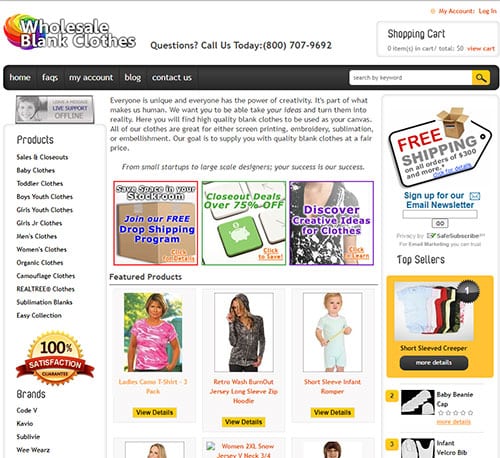
Is This CRO?
I started reading blogs about what people do to get people to buy more often; how to increase our site’s conversion rate.
I changed layouts, added an intro paragraph to show somewhat of a client-centric message, and played around with the BBB logo and live chat in the upper left, along with the placement of a free shipping offer. It was the first time I purposefully attempted to increase conversion rates through iterative testing.
Bam! It worked. Conversion rates went up by about 50%.
Next, I wanted to add more content to product pages, but there wasn’t much more information that I could think of. We already had decent descriptions.
After reading more articles, I thought adding reviews would be a good idea. Turns out it was. Good for both conversion rates and adding unique content that increased page rankings.
By the time I sold the company, the conversion rate was doubled, we had plenty of organic rankings, and had a good amount of revenue.
But, it was time to sell. I’ll save the story as to why for another post.
How I Got Here
After selling the wholesale clothing company, I was afforded the opportunity to discover what I enjoy doing. This is a rare opportunity, and I took full advantage.
I was involved with a few businesses that didn’t pan out, which is quite humbling.
Along with my wife, I got my real estate license and worked to build that website and handle the marketing. One day, my wife let me know that she didn’t want to continue in real estate, except for friends and family.
The opportunity to find my purpose came at a cost. Neither of us had steady jobs, and we were living off the revenue from the business sale. Money was starting to run low. So, it was time to make some decisions.
After some time, I realized that I most enjoyed the process of creating and analyzing. I loved creating something and seeing how systems and people responded to my creation and how changes alter how people and systems react.
I didn’t have the time to start building something. Especially since I didn’t know what that something would be. It was time to join the workforce. I started applying for jobs in development or marketing.
Wilshire Law Firm
After sending applications out and getting a few phone interviews that didn’t quite match what I was looking for, I received an email from someone in the marketing department of Wilshire Law Firm.
“Sounds interesting,” I thought.
I remember applying. It was a bit out of left-field, but it sounded like a good challenge, and they must be making enough to pay well. I mean… it’s a law firm. They’re loaded!
The only problem was that they were located in Los Angeles, and I was about 1.5 hours away when traffic was low. I figured I’d check it out and keep the option open. So, I set up the interview.
Best. Decision. Ever.
As fate would have it, the interviewer would later become a business partner. Masha and I chatted for about three solid hours about search marketing. This was the first time that I can remember being able to talk about my passion with someone and have them understand what I was saying.
After a couple of additional interviews with the owner, I got the job.
It was a fun challenge. The most difficult part of the gig was being an employee. I was used to running my own show and calling the shots. This often led to butting heads with the owner, but we both had one common understanding. We both wanted the company to succeed.
For the most part, I stuck with development and SEO. We had some great successes too.
We were always pushed to do better and better. It wasn’t a negative. I enjoyed being pushed and challenged. At one time, we hired an outside firm who were “experts” at conversion rate optimization. They were to test our pages and give some guidance. The outcome was lackluster, but their methodology opened my eyes to a tool that I never knew existed – remote user testing.
Remote User Testing
When the agency delivered the results, it included videos of test takers examining the target page, audibly giving their opinions. They were all asked similar questions, and it only took a handful of responses to see the correlation. At the time, these videos were more valuable than the proposed mockup.
I needed to find the source of such witchcraft! So, I went Googling and found a handful of service providers so that we could do the testing ourselves. The main hurdle was putting together the right questions. We could not ask too many or too few questions, or the quality of results would go down.
A year or two would pass before reading Making Websites Win by the founders of Conversion Rate Experts. A great book that helped to lay the foundation for our testing questions.
Things were moving in the right direction, and I had even bigger plans in mind for that next phase in life.
SEM Dynamics
I won’t get into the weeds as to what prompted Masha and I to form our dynamic duo and strike out on our own. We had good reason, and I’ll leave it at that.
I do remember the fateful conversion. We were walking down Wilshire Blvd. after grabbing some coffee. I mentioned my side freelance work. It wasn’t any secret. The owner knew before I was hired. I wanted to see her reaction as I discussed it. I wanted to be in business with her. I don’t think she knew it yet. I had to tread lightly because this was my boss, and I considered her to be a friend too.
She told me about how she had thought about having her own agency. The one big piece that held her back was the web dev side. She already had prior experience in helping to run an agency. Something that I lack.
I was sold before she ever brought it up.
“Why don’t we start our own. I can handle the SEO and Dev.” I said. She happily agreed, and that was that. Over a series of lunches and meetings, we created SEM Dynamics.
I left Wilshire Law Firm in the early fall of 2018 to start a transitional gig with an addiction recovery company. It would afford the ability to separate from the firm and launch SEM Dynamics while continuing to earn a living.
It wasn’t long before we got our first client, a law firm in Arizona. We saved up the revenue from that client, and I struck out full-time after bringing on another law firm in Los Angeles. Soon, we had three law firms, and we were building a solid cash cushion.
It would be another six months before SEM Dynamics was ready to bring in Masha and for Masha to be ready to come into SEM Dynamics full-time.
Over three years have passed since both Masha and I dove head-first into running SEM Dynamics. If I had done it all over again, I would have made the same decisions because it has brought me to the point in life where I am.
Where I’m Going
This is where, for me, the story gets fun. Up until this point, my story has just been a loose attempt at cohesively putting together over twenty-five years of experience in somewhat of a logical timeline.
Now it’s time for me to get a little creative and discuss my plans and aspirations – for the future!
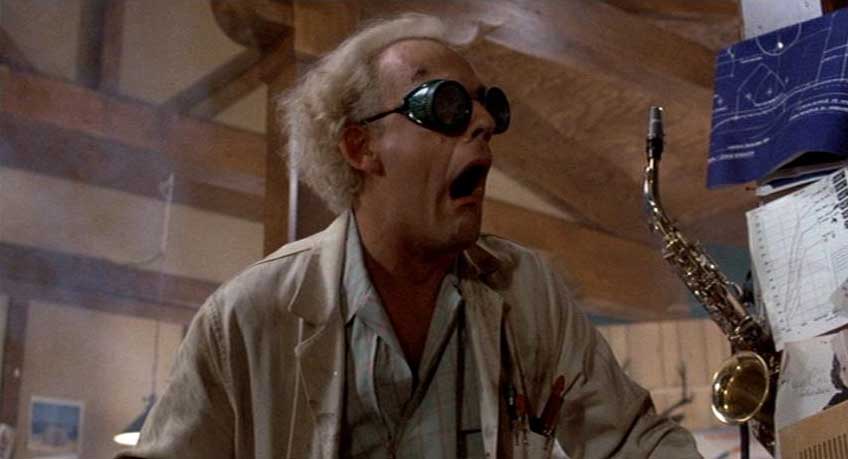
I’m often reminded of a study that concludes that we have a 42% better chance of attaining our goals if we write them down. What most people don’t mention about the study is that it also concluded that giving weekly progress reports to their friends resulted in a 77% increase in goal achievement when compares to those who only think about their goals.
So, why not start by sharing my goals and action plan. Then, create a weekly progress report. But with one catch: Post my weekly progress on my personal blog to be accountable to friends, family, and anyone in the public who wishes to follow along.
One caveat is that, although I do have personal development goals, I will keep those between myself and my family. This documented journey is about learning and business development.
It seems to be best to start with the big picture goals. It makes sense to have multiple streams of revenue to diversify income which can help to generate multiple “snowball effects” and reduce risk. Although, when each new stream starts, strain will be placed on current streams until each new venture becomes self-sufficient. These will be my streams of income:
- SEM Dynamics
- Internet Joint Ventures
- Investments (stock/bonds/commodities)
- Internet-based SaaS product
- Website SEO/CRO testing
- Real Estate
- Franchises or Brick and Morter
I’ll elaborate on a high-level plan or milestones for each. Let’s start with the easiest to knock out.
Joint Ventures
I think that every day people have great ideas. Of those ideas, there are some hidden gems. Behind some of the hidden gems are people who are willing to take action but may not have the means to execute. The problem is a lock on knowledge with development or marketing. This is where I can bring value.
I’m not looking for hundreds of joint ventures. I only want to take on up to two joint venture projects at a time until either exit, or they become scaled to a sufficient level.
Investments
This is an easy one. I believe in holding a diversification of index funds, and I like the idea of dividend reinvestment. Quarterly, I will add to my investment positions in various funds. Aside from index funds, a percentage of investments will be in bonds. I’m not here to discuss investment strategy, what funds or bonds I hold, or the value of a portfolio. The goal is to be purposeful in investing, maintaining positions, and holding those positions so that they can compound over time. I’m a boring investor and prefer it that way.
Internet-based SaaS and Franchises
No solid plan in place for what this will look like. I know that I will have them. I also know that both of these can be great revenue sources. I also am under no illusion that there will be capital and time investments. I’m not looking to start up the next Facebook. I think B2B will be best for a SaaS product. I’m lumping both of these together because I am in the same place with each. That is to say that I have no progress. I guess I have some planning to do, and I’ll update this page once I have the rough details ironed out.
Website SEO/CRO Testing
I learn by doing.
I’ll often play around in the affiliate commission realm when I was to test an idea. Why not make a few extra dollars while testing?
I do want to be more purposeful in affiliate marketing. It offers the opportunity to generate revenue streams from a diversified portfolio of digital holdings without the typical barrier of entry and lower risk. They can be built up over time and can offset costs for other ventures.
Get paid to continue learning, testing, and growing? Yes. Please. Thank you.
Real Estate
This one is fairly straightforward. I will build up an array of rental properties and holdings in REITs. At first, I will focus on single-family residences, duplexes, and quadplexes. Later, I will have commercial real estate holdings. I lean toward storage unit facilities and warehousing. I have a friend who runs a REIT and has said to me, “I’d rather have storage units because instead of having to go through the process of evicting someone, I can auction their stuff off and recoup lost revenue.” Hash, but it does make sense.
SEM Dynamics
I can go into pages and pages for the planning of this company. If you made it through to this point, you will know that it was started in late 2018. At its core, SEM Dynamics has three purposes:
- Help businesses generate revenue
- Help businesses mitigate risk
- Help business owners understand digital marketing
Under SEM Dynamics will be several niche sites that serve the above purpose.
A business plan and vision statement already exist. My partner, Masha, and I are dedicated to this company. This will be the springboard to the above revenue streams.
Without getting into the weeds on our plan, I will say that our first big goal is to break into six figures of monthly recurring revenue (MRR).
We currently have two main offerings, SEM Dynamics and WCAG Pros. We are working to build out a third that we will launch in Q2 of 2023.
“Our goals can only be reached through a vehicle of a plan, in which we must fervently believe, and upon which we must vigorously act. There is no other route to success.”
Pablo Picasso
Plans For This Blog
First and foremost, this blog exists to keep me accountable for the revenue sources that I’ve listed. I will be adding weekly progress updates. These will be relatively brief posts, but I will remain consistent. Aside from accountability, These updates will better document my journey, and hopefully, some grains of knowledge may leak out that will help some entrepreneurs down the road.
The bulk of the information on this blog will be aimed at expressing my thoughts, hypotheses, tests, and results. Again, this will be for my reference to help others who may be struggling to uncover some truths in marketing.
Since my passion lies with how we, as marketers, can pull strings and make changes that manipulate systems and people, the blog’s focus will be on my passion: bridging the gap between SEO and CRO.
